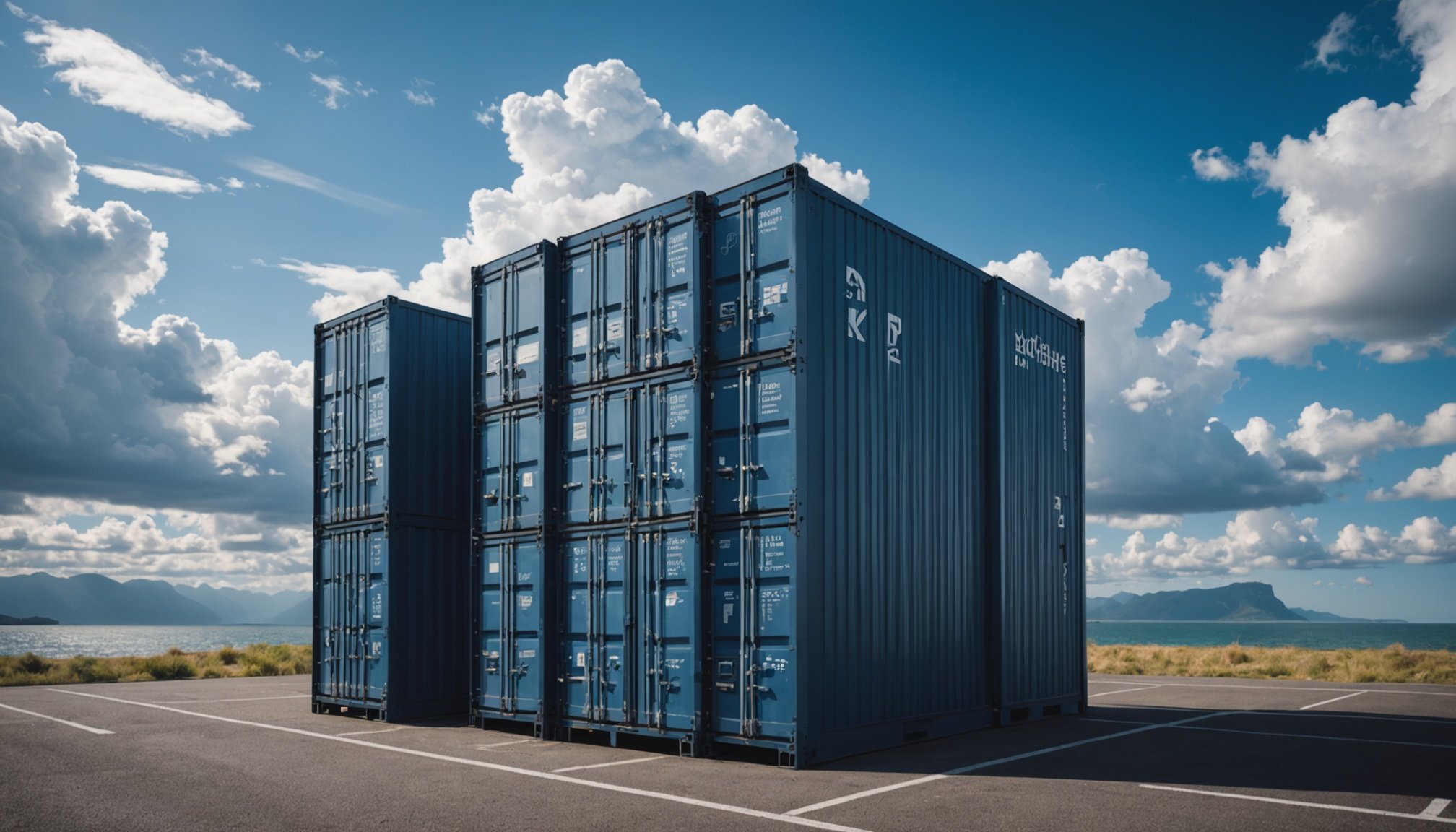Understanding Multi-Cloud Kubernetes Architecture
Multi-cloud architecture involves deploying applications across multiple cloud platforms, offering flexibility and redundancy. This approach enhances service continuity and data safety by allowing workloads to be distributed geographically, mitigating single-cloud failures. Key to this approach is Kubernetes setup within these cloud environments, which supports seamless management of containerized applications.
The components of Kubernetes in a multi-cloud context include the control plane, nodes, and networking infrastructure. The control plane manages the cluster lifecycle, while nodes run the workloads. Networking connects these elements, ensuring fast and secure communication across clouds.
When comparing single-cloud and multi-cloud setups, disaster recovery emerges as a significant advantage of the latter. A disaster recovery plan in a multi-cloud context benefits from distributed resources, which can minimize downtime and enhance resilience. While single-cloud setups may suffer from regional outages, multi-cloud architectures provide a failover mechanism, ensuring that operations continue smoothly.
Thus, integrating multi-cloud architecture into Kubernetes setups not only strengthens disaster recovery but also supports business operations by maintaining uptime and security across different cloud environments. This comprehensive setup addresses potential risks, filling the gap between data safety and operational efficiency.
In the same genre : Boost Kafka Event Streaming: Top Techniques to Enhance Performance and Efficiency
Importance of Disaster Recovery in Multi-Cloud Kubernetes
In the context of multi-cloud architecture, disaster recovery is crucial for ensuring data safety and maintaining service continuity. While leveraging multiple cloud environments offers clear advantages, it also introduces unique challenges and vulnerabilities that organizations must address.
Multi-cloud setups can face risks such as network inconsistencies, data transfer inefficiencies, and potential security breaches. These vulnerabilities highlight the importance of a robust disaster recovery plan. Proper disaster recovery mechanisms can effectively mitigate these risks, ensuring that business operations remain uninterrupted even amidst technical challenges.
Implementing a strong disaster recovery strategy is vital to maintaining uptime. By distributing workloads across various cloud environments, businesses can avoid localized failures and ensure a smoother operational flow. This resilience is key to sustaining business functions and preventing costly disruptions.
Effective disaster recovery not only safeguards data but also reinforces business operations. By planning for worst-case scenarios, organizations enhance their adaptability and reduce downtime. This proactive stance provides businesses with a competitive edge, allowing them to respond swiftly to challenges, thereby fostering trust and reliability.
Overall, disaster recovery plays a critical role in maximizing operational security and efficiency in multi-cloud Kubernetes architectures.
Tools and Technologies for Disaster Recovery
In the realm of disaster recovery, selecting the right tools and technologies is paramount for ensuring business continuity and data safety. A comprehensive Kubernetes backup strategy is pivotal, offering an automated cushion against potential data loss. Automation tools like Velero, Kasten K10, and Stash facilitate streamlined recovery processes, ensuring data integrity and rapid restoration of services.
Evaluating Automation Strategies
Automation is indispensable in enhancing recovery processes; it reduces manual errors and accelerates response times. Tools that automate backup schedules and manage data redundancy increase resilience by systematically safeguarding data across cloud environments. By incorporating cloud-native solutions alongside third-party services, businesses can achieve operational efficiency and greater control over their disaster recovery strategy.
Further, integrating orchestration platforms ensures seamless coordination of containerized applications during recovery. Advanced algorithms and machine learning are key to predictive analytics in disaster scenarios, providing foresight and proactive measures. These elements not only fortify the Kubernetes setup but also ensure minimized downtime in multi-cloud architectures.
Thus, deploying a combination of thoughtfully selected recovery tools and robust automation strategies can significantly enhance an organisation’s ability to preserve its operational continuity and service continuity across diverse cloud environments.
Best Practices for Multi-Cloud Disaster Recovery
Establishing best practices for disaster recovery in a multi-cloud environment ensures operational resilience. Recovery strategies should include a combination of regular testing, thorough documentation, and continuous updates to remain effective.
Proven Methodologies
Adopting proven methodologies such as automated backups and periodic failover drills can enhance the reliability of disaster recovery efforts. These practices prepare businesses for unexpected system disruptions by ensuring data is consistently recoverable and processes can swiftly execute in emergencies.
Importance of Testing
Regular testing and maintenance of disaster recovery plans are crucial for identifying potential weaknesses. Through simulated disaster scenarios, organizations can gauge the readiness and efficiency of their recovery strategies. These assessments allow for adjustments that enhance overall resilience and reliability.
Recommended Security Measures
During the recovery process, safeguarding data with robust security measures is essential. Encrypting sensitive information and maintaining strict access controls are vital steps. Utilizing tools that offer security features helps protect data integrity during the transfer and restores process.
Integrating these best practices into a multi-cloud disaster recovery framework can provide a comprehensive approach, ensuring that organizations are prepared for potential adversities while maintaining operational continuity.
Case Studies and Real-World Examples
Understanding how case studies contribute to developing effective disaster recovery strategies is crucial. These examples illustrate the pitfalls and opportunities within multi-cloud architectures. Organizations utilize these insights to refine and adapt their approaches, enhancing service continuity and data safety.
Successful Implementations
Several businesses have successfully navigated disaster recovery challenges. For example, a financial institution employing a comprehensive disaster recovery plan saw minimal service disruption during a major cloud outage. This achievement underscores the importance of Kubernetes setup in managing workloads across diverse cloud environments.
Lessons from Failures
Conversely, lessons from failures provide valuable insights. One organization faced prolonged downtime due to inadequate planning, highlighting the need for a well-defined disaster recovery strategy. This experience emphasized the significance of meticulous planning and frequent testing to bolster resilience.
Industry-Specific Examples
In healthcare, managing sensitive data demands robust disaster recovery measures. A hospital’s successful use of multi-cloud platforms to maintain patient data integrity and availability during a cyberattack demonstrates the potential of thoughtful implementation. Such success stories provide a blueprint for others aiming to enhance resilience and operational security in multi-cloud setups.
Developing a Comprehensive Checklist
Creating a thorough disaster recovery checklist is vital for ensuring preparedness and responding swiftly to incidents. A well-structured checklist enables businesses to systematically manage and evaluate their recovery strategies.
Step-by-Step Checklist
- Identify Critical Systems: Catalog essential applications and services, ensuring that priority is given to mission-critical operations.
- Backup Verification: Regular checks to confirm data integrity and successful storage on diverse cloud environments.
- Communication Plan: Outline clear roles and channels for timely updates during a disaster.
Essential Metrics
Monitoring specific metrics supports evaluation of recovery effectiveness and resilience. Key indicators include:
- Recovery Time Objective (RTO): The acceptable downtime before regaining critical functions.
- Recovery Point Objective (RPO): The maximum data loss measured in time, reflecting backup frequency.
Regular Updating and Auditing
Consistent audits and updates to disaster recovery plans ensure alignment with evolving business needs and technological advances. Appropriately adjusting the checklist in line with Kubernetes setup changes enhances reliability and engenders service continuity.
Maintaining a dynamic checklist with clear action items supports rapid recovery and minimizes disruptions, safeguarding data safety and business functionality in multi-cloud environments.
Expert Tips and Insights
Recommendations from Industry Experts
Incorporating expert advice into your disaster recovery approach can markedly enhance resilience. One prevalent suggestion is to prioritise planning; allocate ample resources and attention to designing an adaptive and scalable disaster recovery strategy to suit the business landscape. Experts underscore the importance of regularly testing recovery plans to validate their effectiveness, ensuring prompt data restoration and minimal downtime.
Common Pitfalls to Avoid
One typical oversight in disaster recovery strategy implementation is neglecting to update plans as cloud environments evolve. Ensure that disaster recovery tools are compatible with current technologies. Additionally, avoid underestimating the significance of automation; manual interventions should be minimised to reduce errors and response times.
Keeping Abreast of Evolving Trends
Disaster recovery in a multi-cloud architecture is a dynamic field; staying informed of trends like enhanced automation, the rise of AI-driven analytics, and shifting best practices will keep strategies sharp and relevant. Engaging with the latest research and participating in industry forums can offer valuable insights into emerging solutions and potential optimisations, maintaining an edge in service continuity and reliability.
Designing a Resilient Disaster Recovery Strategy
A well-structured disaster recovery strategy is essential in safeguarding operations and ensuring business resilience. Focus on thorough planning, considering worst-case scenarios and specific recovery objectives.
Defining Objectives and Requirements
Begin with clear objectives for your disaster recovery plan. Determine critical data and applications that require priority during recovery. Identify key stakeholders and define their roles to ensure a coordinated response.
Key Stages in Developing a Comprehensive Plan
Developing a successful strategy involves several stages:
- Assessment: Analyze potential risks and vulnerabilities.
- Resource Allocation: Assign necessary resources and tools for effective recovery.
- Strategy Formulation: Outline detailed procedures for rapid response and recovery.
Essential Factors for Kubernetes Readiness
Incorporating Kubernetes readiness into your disaster recovery strategy is crucial. Ensure that your Kubernetes infrastructure supports automated failover and rapid scalability. Regularly update your configurations to align with evolving cloud environments and business needs.
Enhance Resilience Through Continuous Improvement
Regular testing and revising of your disaster recovery strategy strengthen resilience. Simulate potential disaster scenarios to test preparedness and refine processes. This proactive approach minimizes recovery time and secures long-term operational continuity.











